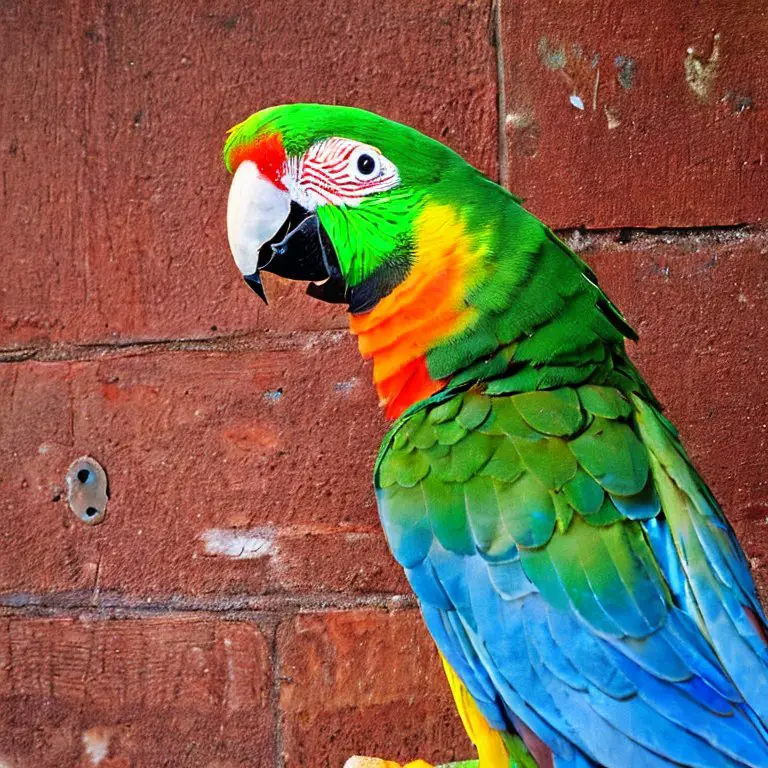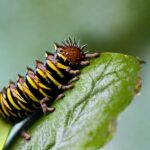
Are parrots herbivores or omnivores? This is a question that has been the subject of much debate and research among biologists and birdwatchers.
On the one hand, parrots are known for their strong, sharp beaks and powerful tongues, which allow them to crack open seeds and nuts and eat a variety of fruits and berries. On the other hand, some species of parrots have been observed feeding on insects and other small animals, leading some to question whether they should be classified as omnivores.
In this article, we will explore the diet of parrots in the wild, the adaptations they have for a herbivorous diet, and the variability in their diet that allows them to be flexible and opportunistic eaters.
- Definition of Herbivores and Omnivores
- Overview of Parrots
- Are Parrots Herbivores or Omnivores?
- What Do Parrots Eat?
- Are Parrots Carnivores?
- Final Thoughts
Definition of Herbivores and Omnivores
Herbivores are animals that primarily feed on plants. They are adapted to obtain nutrients from a diet of leaves, stems, roots, flowers, and other plant material. Herbivores may have specialized adaptations, such as grinding teeth or long digestive tracts, to help them process tough plant material.
Omnivores are animals that feed on both plant and animal material. They are able to adapt to a wide range of food sources and are not limited to a particular type of diet. Omnivores may have more generalist digestive systems, with teeth and digestive enzymes that are adapted to processing both plant and animal material. Examples of omnivores include humans, bears, and pigs.
Overview of Parrots
Parrots are a diverse group of birds that are found in a variety of habitats around the world, including tropical rainforests, woodlands, grasslands, and deserts. They are known for their brightly colored feathers, strong beaks, and powerful tongues, which they use to eat a wide range of food items. Parrots are highly intelligent and social animals, and many species are able to mimic human speech and other sounds. They are popular pets due to their ability to learn tricks and their attractive appearance.
There are over 400 species of parrots, which are divided into three main groups: true parrots, cockatoos, and lorikeets. True parrots include species such as parakeets, macaws, and Amazon parrots, while cockatoos include species such as galahs, Major Mitchell’s cockatoos, and palm cockatoos. Lorikeets are small, brightly colored parrots that are found in Australia and New Guinea.
Are Parrots Herbivores or Omnivores?
One question that has been the subject of much debate and research among biologists and birdwatchers is whether parrots should be classified as herbivores or omnivores. On the one hand, parrots are known for their strong, sharp beaks and powerful tongues, which allow them to crack open seeds and nuts and eat a variety of fruits and berries. On the other hand, some species of parrots have been observed feeding on insects and other small animals, leading some to question whether they should be classified as omnivores.
The diet of parrots in the wild is typically varied and depends on the habitat and the availability of food. Most parrots are primarily herbivorous, meaning that they feed primarily on plant material such as fruits, berries, seeds, flowers, nectar, and pollen.
They have strong, sharp beaks that allow them to crack open seeds and nuts, and they use their tongue to help them eat. They also have a large crop (a sac-like structure near the throat) that allows them to store food before it is digested and a gizzard (a muscular part of the stomach) that helps to grind up plant material.
However, some species of parrots may also include insects, grubs, and other small animals in their diet, especially during times when other food sources are scarce. For example, the galah cockatoos of Australia have been observed feeding on insects and grubs, as well as seeds and fruit. Similarly, the black-hooded parakeet of South America has been known to feed on insects, as well as flowers, seeds, and fruit.

Parrots have a number of adaptations that enable them to consume and process a herbivorous diet. Their beaks are strong and sharp, allowing them to crack open seeds and nuts and to eat a variety of fruits and berries. Their tongue is also adapted for eating plant material, with a brush-like tip that helps them to collect nectar and pollen. In addition, parrots have a large crop that allows them to store food before it is digested, as well as a gizzard that helps to grind up plant material.
Some parrot species have also evolved special adaptations that allow them to better process tough plant material. For example, the hyacinth macaw has a beak that is exceptionally hard and strong, allowing it to crack open the hardest of nuts and seeds. The kea, a parrot species found in New Zealand, has molar-like structures on its beak and tongue that allow it to grind up tough plant material. These adaptations enable parrots to extract the maximum amount of nutrients from their diet, despite the fact that plant material can be difficult to digest.
Parrots are highly adaptable and opportunistic eaters, and their diet can vary widely depending on their habitat and the availability of food. In the wild, parrots often feed on a variety of fruits, berries, and seeds, as well as flowers, nectar, and pollen. They may also feed on insects and other small animals, especially during times when other food sources are scarce.
The diet of parrots can vary significantly based on their habitat and the plants and animals that are available to them. For example, parrots that live in tropical rainforests may have access to a greater diversity of plant and animal life, while those that live in more arid regions may have a more limited diet. In addition, some parrot species may specialize in feeding on particular types of plant material, such as nectar or fruit, while others may be more generalized in their feeding habits.
Parrots are also known to be flexible and opportunistic eaters, and they may alter their diet in response to changes in their environment. For example, parrots may switch to a different type of food if their preferred food source becomes scarce, or they may feed on a wider variety of foods during certain seasons when food is more abundant.
In captivity, parrots can be fed a diet that is similar to what they would eat in the wild, including a variety of seeds, nuts, fruits, vegetables, and formulated pellets. It is important to provide parrots with a well-balanced diet that meets their nutritional needs, as a deficiency in any particular nutrient can have negative effects on their health.
Overall, the diet of parrots is variable and depends on a number of factors, including habitat, availability of food, and the particular adaptations of the species. While parrots are generally considered to be herbivorous, with a diet that primarily consists of plant material, they may also incorporate insects and other small animals into their diet, making them omnivorous to a certain extent.
What Do Parrots Eat?
In the wild, parrots typically feed on a variety of plant material, including fruits, berries, seeds, flowers, nectar, and pollen. They have strong, sharp beaks that allow them to crack open seeds and nuts, and they use their tongue to help them eat. Some species of parrots may also include insects, grubs, and other small animals in their diet, especially during times when other food sources are scarce.
In captivity, parrots can be fed a diet that is similar to what they would eat in the wild, including a variety of seeds, nuts, fruits, vegetables, and formulated pellets. It is important to provide parrots with a well-balanced diet that meets their nutritional needs, as a deficiency in any particular nutrient can have negative effects on their health. Some parrot species may have specific dietary requirements, so it is important to research the dietary needs of a particular species before feeding it.
Are Parrots Carnivores?
Parrots are not carnivorous, meaning they do not primarily feed on meat. While some species of parrots may include insects and other small animals in their diet, they are primarily herbivorous, which means that they primarily feed on plant material.
Final Thoughts
In conclusion, parrots are a diverse group of birds that are found in a variety of habitats around the world. While they are generally considered to be herbivorous, with a diet that primarily consists of plant material, some species of parrots may also include insects, grubs, and other small animals in their diet.
Parrots have a number of adaptations that enable them to consume and process a herbivorous diet, including strong, sharp beaks, powerful tongues, and specialized structures such as a crop and gizzard.
However, they are also highly adaptable and opportunistic eaters, and their diet can vary widely depending on their habitat and the availability of food.
Overall, parrots are fascinating creatures that have a unique and varied diet that reflects their adaptability and opportunistic nature.
Lance has been passionate about the plant-based diet and we have been following a whole food plant-based diet for over 5 years. We focus on health, natural healing, weight management, animal rights, and the health of the planet and environment by focusing on whole plant-based foods and sustainable practices.
Learn more at the About Me page and follow on social media at the links below.






